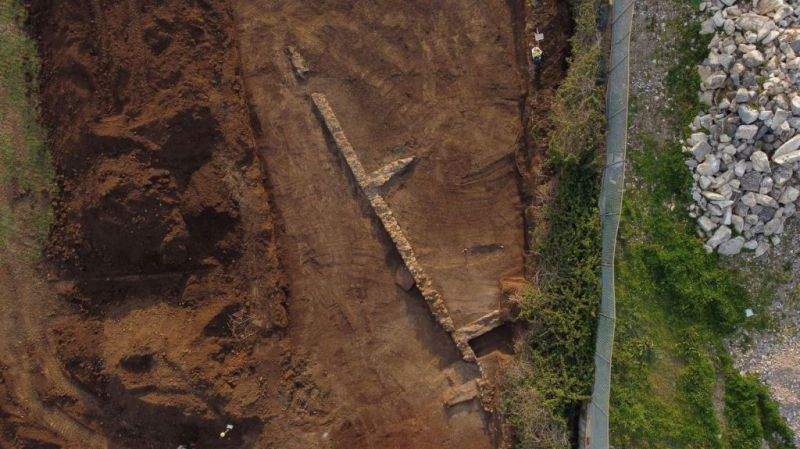Major archaeological discoveries at Pomezia station: found hitherto unknown context
Important archaeological discover ies at the station of Pomezia (Rome), which emerged between January and February (but the news was released by the Soprintendenza Archeologia, Belle Arti e Paesaggio of Rome and Rieti only in the last few days) during work on the adjustment of an overpass on the Rome-Formia railway line. The significance of these discoveries consists in the fact that they belong, the superintendency points out, to a hitherto completely unknown context, datable between the first century B.C. and the fifth century A.D.
The investigations conducted by archaeologists and workers from the company Eos Arc S.r.l., under the scientific direction of the superintendency, in the person of the archaeological officer Francesca Licordari, have allowed the stratigraphic investigation of a large portion of this context, which extends far beyond the limits of the excavation area, into land of other properties. The most ancient elements are a road axis built directly into the geological bench and clearly recognizable thanks to the presence of driveway furrows, and a series of wall structures, of which the foundations and a few fragments of what must have been the elevation of uncertain function, but probably part of a much larger complex, perhaps a rustic villa, that extended into the surrounding lands, are preserved. The structures are referable to different phases of the life of these buildings and clearly draw at least two rooms, at first separated by a large open area, later enclosed by another wall structure.
After the structures were abandoned, and perhaps with the main building still partially in use, the area was occupied by an only partially explored necropolis, which yielded a total of 17 burials. These are graves of different types covering a period of about two centuries, between the 3rd and 5th centuries AD, with the presence of at least one inhumed person of the Christian faith, as evidenced by the discovery of a christogram ring.
Pictured is an overhead photograph of the newly discovered archaeological area.
 |
| Major archaeological discoveries at Pomezia station: found hitherto unknown context |
Warning: the translation into English of the original Italian article was created using automatic tools. We undertake to review all articles, but we do not guarantee the total absence of inaccuracies in the translation due to the program. You can find the original by clicking on the ITA button. If you find any mistake,please contact us.




























